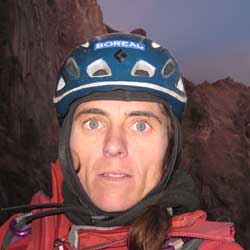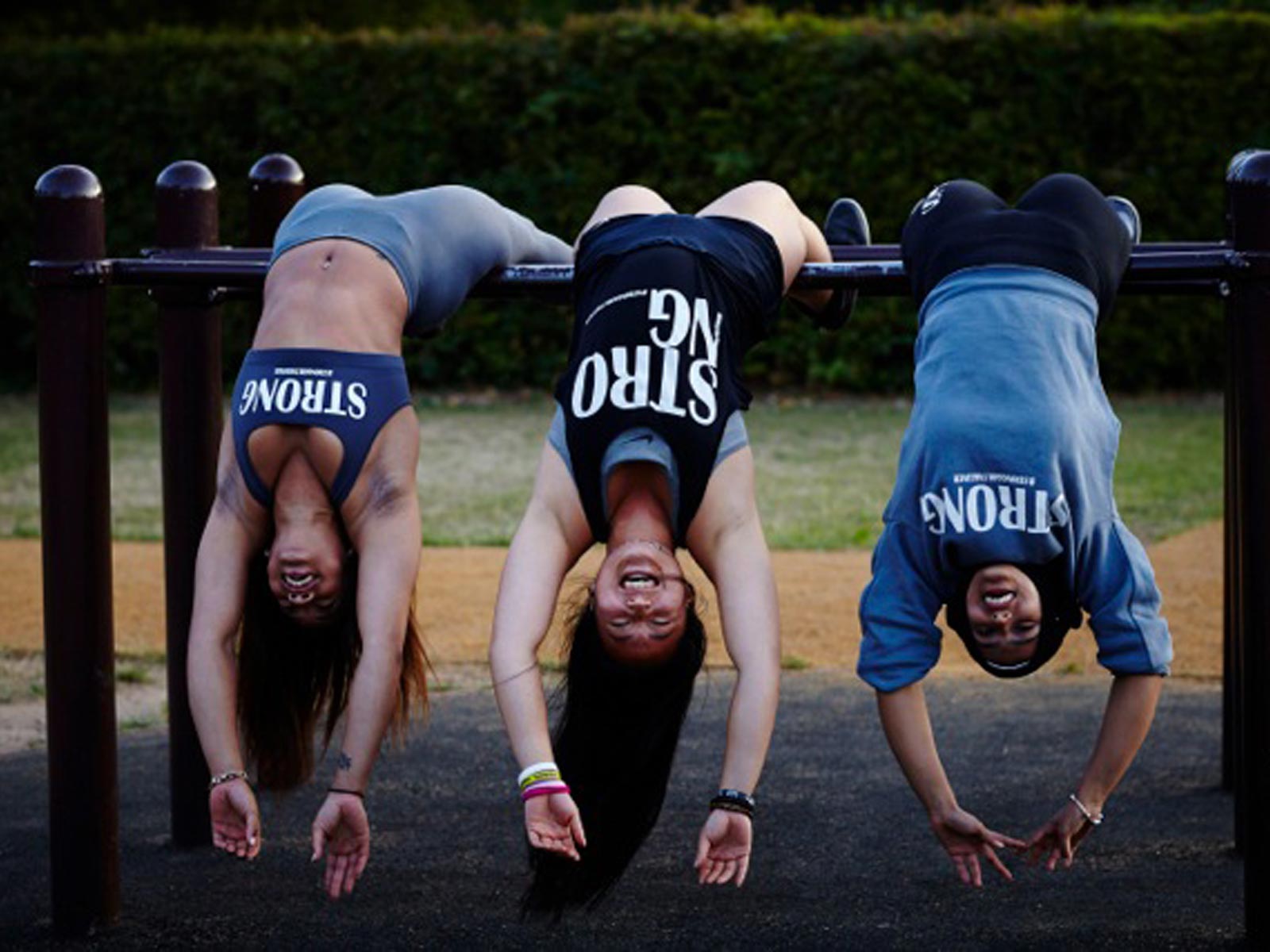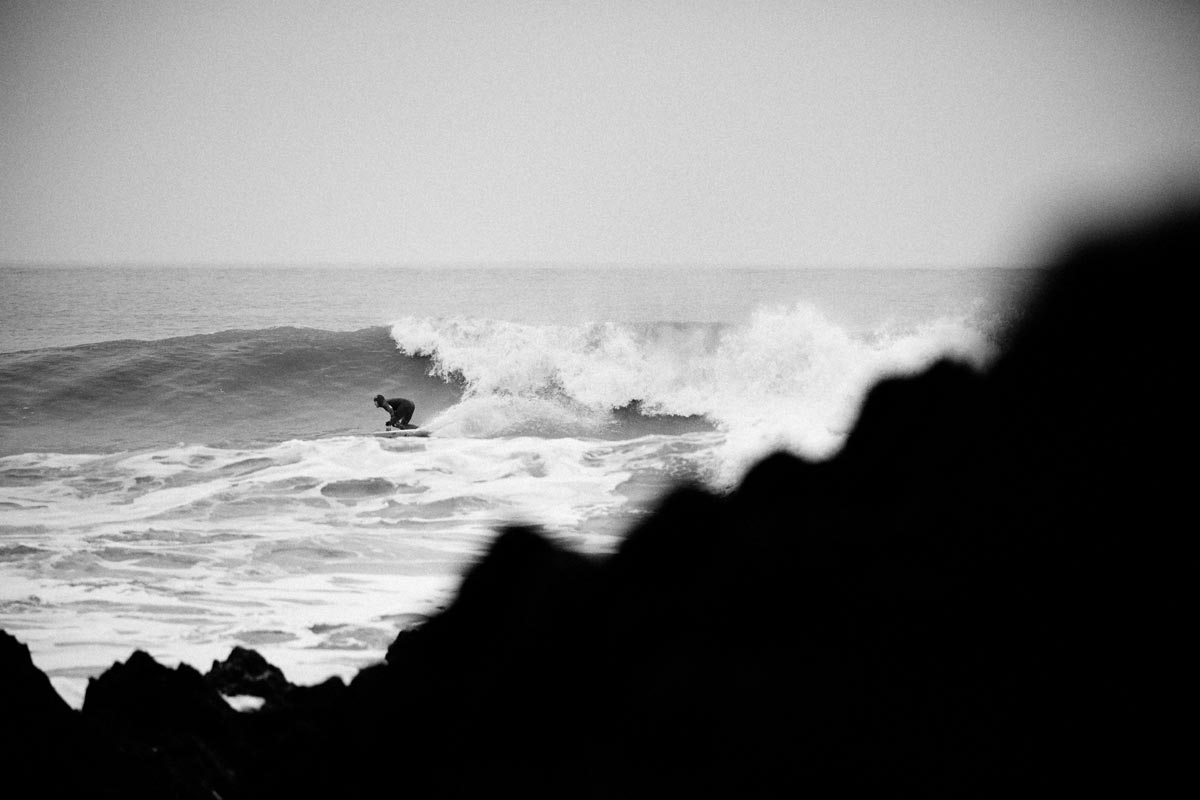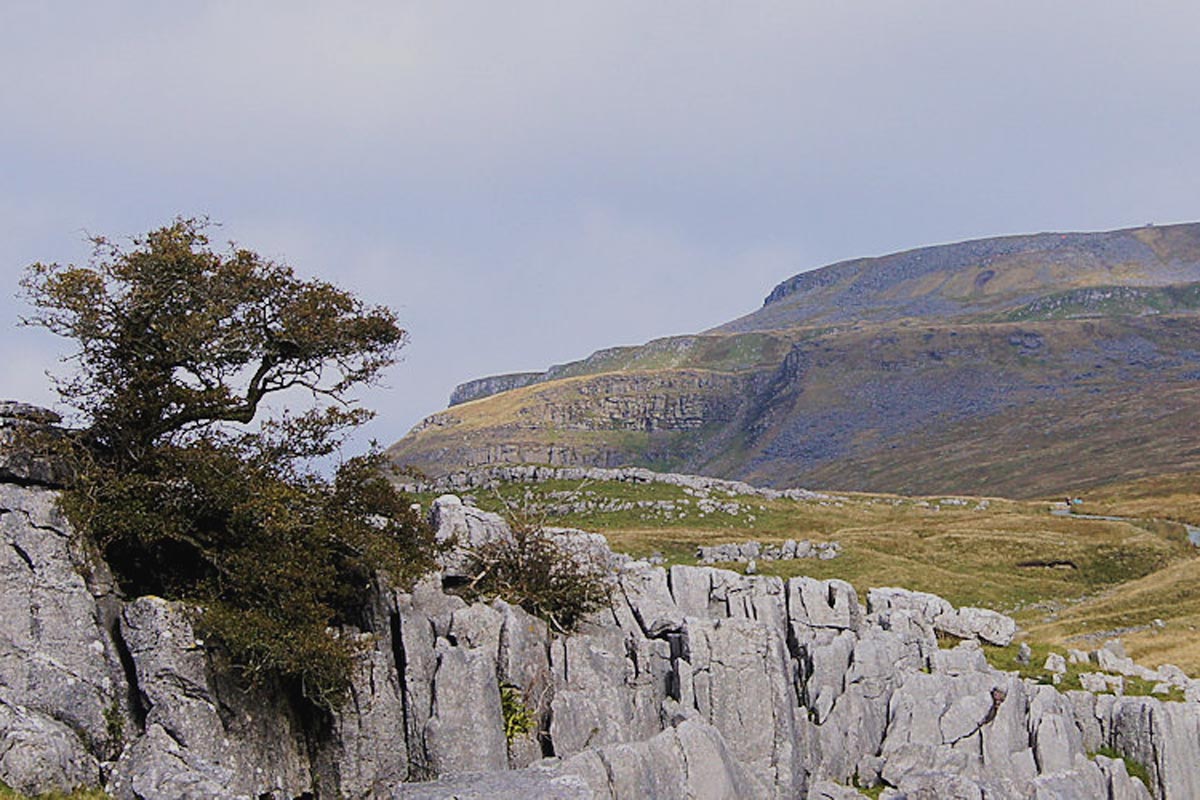What inspired you to first explore climbing?
It just happened, suddenly I was exploring.

Can you tell us a little about your first climb, and what you got from it?
My first climb was while studying PE (Physical Education) at university, there was the chance to participate in a Multi-Adventure event. Climbing was one of the sports.
I went to the rock a few times before the event. At that time I was practicing many different sports and climbing was just one.
What was it that made you want to go climbing again?
After the event, the event’s colleagues encouraged me to continue and I started to have fun climbing.
You’re known for solo aid climbing. Can you tell us a little about the technique and equipment used, and the difference to free climbing?
I use a device named Soloist (self protection). It will stop a fall if you use it properly. Solo aid climbing big walls requires a lot of technique, gear and knowledge of the manoeuvres.
There are both similarities and differences with free climbing. The technique required and some of the gear is different, but in my opinion aid climbing requires concentration for longer. The experience is different between free climbing and aid climbing, but share some similarities.
Many would see climbing solo as more of a challenge than climbing with a team. Can you explain why you climb solo?
I climb solo because it’s a personal need. My need. It’s something that I feel I need and want to do, and I try to make it happen whenever I can. I solo climb because it is one tool I have chosen to experience life. Climbing is just an excuse to live an experience.
What are the differences for you between climbing solo and with a team?
You can’t compare climbing solo or part of a team, they’re different. It’s not double effort, it’s more than that. When you solo climb you do all the physical work, and mentally you are alone too.
You need to deal with everything yourself, this is harder than solving problems within a team. There is no one to share good or bad moments with. There is no one with whom you will talk or express your feelings. Your hard moments will be bigger, your bad feelings will become stronger, your fears worse…
Because when you are alone everything increases and you never know how tough it will become until you are in the situation. If you are not ready for it, it could be too much.
How are you rewarded by climbing solo?
It’s a very personal reward, it’s nothing that can come from outside. You can’t expect to be socially rewarded. Only someone who has lived through a similar experience, whether from climbing or something else, can assess it in perspective.
Therefore the personal reward is huge. Great experiences, amazing moments, intense life, surprising positive reactions… And later, you decide if you want to share it or not.
I’ve read you once spent 32 days on a wall. Can you tell us a little about where this was, and a little about this experience?
Once I spent 32 days on Amin Brakk (Karakorum, Pakistan) with Pep Masip and Miquel Puigdomènech. Many years later I spent another 32 days in Chile on the wall of Serranía Avalancha, this time alone. I have different memories for different situations, to solo climb involves much more effort but more rewards too. But I enjoyed both and I have great memories from both.
Both ascensions were in huge big walls around 1,500 metres. In Pakistan the climb was technically very difficult. In Chile the difficulty was not the wall or the climb itself but the isolation and the weather conditions, horrible strong rains.

How did you go from not climbing at all to these big challenges?
In my first year of climbing, I was climbing walls of A5 difficulty (pretty hard technical difficult level of aid climbing) thanks to the motivation and the desire to want to learn and experience more. It was something that came fast, naturally and it flowed. If something doesn’t require a big effort, it doesn’t have the same merit. The more you put in, the more you get out.
I focused on challenges that for me were hard. Like solo ascents and exploration, to be alone at base camp without any communication device (no phone, no radio) for months or weeks hanging on the wall in all weather conditions.
How do you set your next challenge?
One day, when I’m ready for it, a new goal appears. Sometimes a wall just shows up, other times I look for it.
Can you tell us of a little about the preparation for your big isolated expeditions?
For big isolated expeditions most of my preparation is mental. First I need to discover if I really want to go. That seems easy but it’s not. Sometimes we think we want something but really we don’t! Then I need to deal with all the fears that will appear once I’ve decided I’ll go. For this, my motivation needs to be sincere and real. And you have to be very fit as well
Is every part of the expedition solo, for instance do you have support to get your gear to remote walls?
Sometimes I have porters to help carry my gear, sometimes not. It depends on the country and if porters are available. Some expeditions I have carried everything by myself.
If there is the option to have porters, for sure I’ll take it. It’s not that I need to do everything by myself or that I need to prove I can do it. When I have done the carries by myself it was because I was in a remote place with difficult access, or the country had no porters.
As for the climb itself, everything is always alone. At the base camp, carrying to the wall, the climb….!
I spent another 32 days in Chile on the wall of Serranía Avalancha alone
How do you prepare physically?
Physically I don’t do anything different than for the rest of time. I try to climb as much as possible, free or aid climbing on multipitch routes. I’m always climbing and carrying gear, as a result I’m fit.
What was your favourite climb and why?
I don’t have a favourite climb. Each one was a challenge for its own reason. Although some solo ascents have more intense memories and feelings.
How do you connect with nature on your expeditions? How does the natural world inspire you?
When climbing you connect with nature. You are there, and there’s nothing else but you and natural world around you, so you only can connect with it or ignore it. I don’t think this second option will be a good one.
What motivates you and inspires you?
I can be inspired by a wall, a person, a place, nature, a country, or people. There are situations and people more or less motivating, but really, you are the only one that can motivate yourself.
If you don’t know how to create, when to use or how to recover your motivation when things will go wrong or difficult, probably you are not truly motivated. If you depend on external situations or persons to be motivated, if they won’t be there, what are you going to do to keep the motivation alive?
Sílvia is a professional climber and regularly gives climbing lectures and motivational talks. http://www.vidalsilvia.com/



